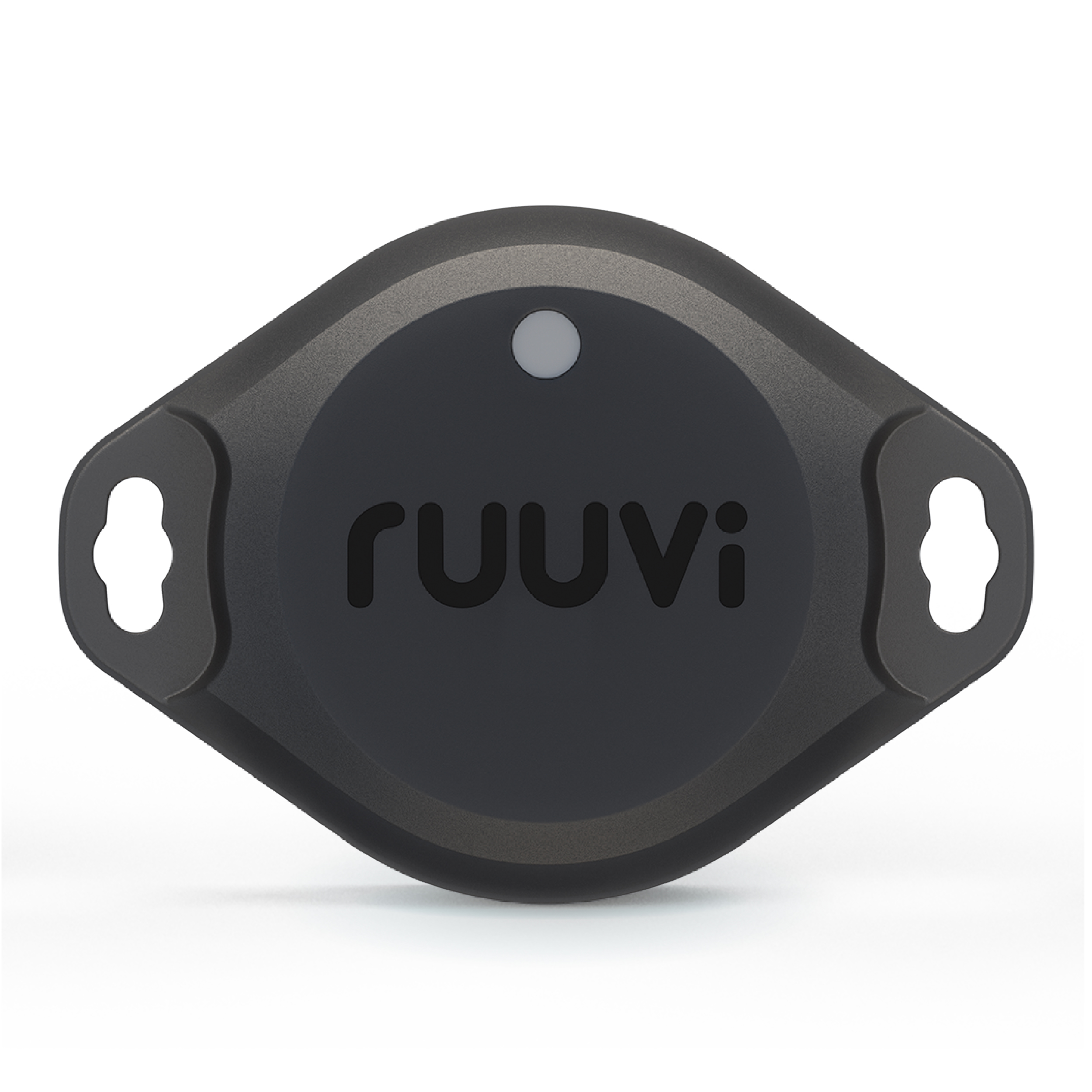Composting is a great way to make use of organic material, such as kitchen and garden waste In compost, diffusers and microorganisms eat and roost organic matter, which leads to the waste becoming nutrient-rich mulch.
However, microorganisms are surprisingly fussy about their ideal temperature. If the compost temperature does not rise above 30 °C, no composting will occur. Reasons for this can be that the compost may be too dense and wet, or alternatively too dry and waste-free. If the temperature is too low, it’s a sign of microorganism inactivity when they do not dispose of waste properly. In this case, the organic waste rots, which means that the compost does not produce mulch and it smells awful. Riittävän korkea lämpötila takaa myös patogeenien tuhoutumisen, joka on tärkeää, jos kompostia halutaan käyttää hyötykasvien ravinteena. In addition, weed plant seeds are destroyed at a temperature of about 50 °C.
A compost that is too hot is often not a problem. Composting occurs even at temperatures above 70 °C. If the temperature in the compost rises above 80 °C for some reason, the diffuser organisms may die. In this case, the composting process stops at least momentarily.
Measure the temperature of the compost and stir the contents at the right time
The temperature of the compost can be affected by turning the ingredients in the compost. If the temperature in the compost starts to decrease, it may be either too dense, too dry, or it may lack waste which gives the microorganisms nutrients.
Tightly packed compost should be stirred with a stick. In addition to that, dry ingredients can be added to the compost to increase the airiness of the compost and bind excess liquid. If the compost is too dry, moist waste or warm water can be added to it to increase the temperature. As a rule of thumb, compost moisture is at a good level if you squeeze a fist of compost in your hand and a few drops of water drip from it. Compost can also cool when composting microorganisms run out of nutrition, i.e. composting slows down.
With the help of a RuuviTag, you can monitor the temperature of the compost at all times. In addition, you can view the different stages of composting with temperature changes in the data graphs found in the Ruuvi mobile app. If necessary, you can also set alarms for each RuuviTag: if the temperature drops significantly from the usual, you can go check your compost and take any necessary actions.
Attach the waterproof RuuviTag inside the compost to the top with adhesive tape or with a screw. ou can either tape a regular RuuviTag’s breathing hole shut with a waterproof tape or alternatively get a fully waterproof RuuviTag Pro 2in1.
We recommend placing the taped RuuviTag and RuuviTag Pro 2in1 in a sealed minigrip bag. The bag protects the sensors from thermal fluctuations in the compost and from continuous very high humidity.
What can be put in compost?
It is important to know what can be put in compost and what cannot, in order to ensure healthy and effective composting. The following items can be put in compost:
- Plant waste: Fruit and vegetable peels, grass clippings, leaves, twigs, and flower remnants are excellent composting materials.
- Garden waste: Prunings from trees and bushes, hay, straw, and plant trimmings can also be added to the compost.
- Kitchen waste: Food scraps, coffee grounds, tea bags, and eggshells are biodegradable materials that enrich the compost.
- Paper and cardboard: Uncoated paper, corrugated cardboard, and egg cartons are safe compostable materials, as long as they are not added in excessive amounts.
- Garden plant remnants: Dead parts of plants, such as withered flowers, stems, and leaves, can be added to the compost.
On the other hand, to ensure the effectiveness of the compost, the following items should not be added:
- Ash
- Plastic packages labelled as biodegradable (they decompose too slowly)
- Chewing gum
- Large amounts of paper or cardboard.
Buy a Waterproof Wireless Thermometer to a Compost
Make your compost more efficient with RuuviTag Pro 2in1
RuuviTag Pro Sensor
| Quantity | Unit Price(€) |
|---|---|
| 1 | |
| 5-10 | |
| 11-25 | |
| 26-50 | |
| 51-99 |
Are you looking for bigger quantities? Contact us for pricing.
Made in Europe, Finland.
Worldwide free shipping on orders over 100 €.
RuuviTag Pro is a rugged IP certified environmental sensor for temperature, air humidity, air pressure and acceleration monitoring. The RuuviTag Pro is based on RuuviTag’s successful concept and additionally brings several outstanding features to the table. RuuviTag Pro is the toughest open source sensor on the market and it fits perfectly with demanding industrial and serious home uses.
RuuviTag Pro monitors environmental conditions and sends the data directly to your mobile device. Ruuvi Station mobile app allows you to view real-time accurate measurements and historical graphs. The app also provides customisable alerts to notify you of critical conditions, such as a melting freezer, excessively high bedroom temperatures that could disrupt sleep, or elevated humidity levels in your basement.
RuuviTag Pro or RuuviTag?
The RuuviTag Pro is a more rugged version of the RuuviTag. Both share the same circuit board design and operating principle. The RuuviTag Pro features a more accurate temperature sensor, a more durable enclosure, improved mounting options, and a wider operating temperature range battery. If you’re unsure whether the basic RuuviTag will meet your needs, especially if you plan to use the sensors in extreme conditions or industrial environments, we recommend selecting the RuuviTag Pro. Please refer to the technical specifications for more details.
Operational Conditions
Operating temperature (with stock battery): -40 °C to +85 °C (-40 °F to 185 °F).
Housing (4in1 and 3in1) water protection level: IP67, splash-proof, non-condensing location.
Housing (2in1) water protection level: IP68 & IP69K, hot pressurised spray.
Battery: User-replaceable CR2477T (included).
Battery lifespan: Estimated 12 to 24 months.
Certifications: CE, FCC, ISED, TELEC, IFETEL, NOM, RTCA DO-160 category H, RoHS, IC, HVIN, IMDA, OFCA, ICASA, POTRAZ.
Bluetooth range: 5-20 meters (indoor), 20-100 meters (outdoor). The sensitivity of the receiving mobile device’s antenna, obstacles and wall materials affect the range. For increased range, use the Ruuvi Gateway router as a receiver.
App Features
Free and easy: User-friendly free app, signing in is optional.
Platforms: Android and iOS.
Alerts: Configurable Bluetooth push alerts with customisable messages.
Real-time measurements: Track data in real time.
Historical data: Detailed historical graphs available for up to 10 days (offline).
History export: 10-day history export.
Dashboard: See all your sensors at a glance.
Personalise sensors: Use custom backgrounds and names.
Multilingual: Available in English, Finnish, Swedish, French, and German.
RuuviTag Pro 4-in-1
Temperature: °C, °F, K; typical accuracy ±0,1 °C @ 5-60 °C (±0.36 °F @ 41-140 °F).
Air humidity: RH-%, g/m3, dew point; typical accuracy ±2 RH-% @ 20…80 %. Range: 0-95 %.
Air pressure: Pa, hPa, mmHg, inHg; typical accuracy ±1 hPa. Range: 500-1155 hPa.
Motion: Movement counter. Counter is incremented when acceleration exceeds the threshold on any axis.
RuuviTag Pro 3-in-1
Temperature: °C, °F, K; typical accuracy ±0,1 °C @ 5-60 °C (±0.36 °F @ 41-140 °F).
Air humidity: RH-%, g/m3, dew point; typical accuracy ±2 RH-% @ 20…80 %. Range: 0-95 %.
Motion: Movement counter. Counter is incremented when acceleration exceeds the threshold on any axis.
RuuviTag Pro 2-in-1
Temperature: °C, °F, K; typical accuracy ±0,1 °C @ 5-60 °C (±0.36 °F @ 41-140 °F).
Motion: Movement counter. Counter is incremented when acceleration exceeds the threshold on any axis.
Compatibility
Integrations: Victron Energy, Home Assistant, Homey, and more.
Remote monitoring: When not within Bluetooth range, online remote monitoring is available with the Ruuvi Gateway and Ruuvi Cloud, both sold separately.
Technical Specifications
Data sheet: Download (pdf)
Read more info below:







